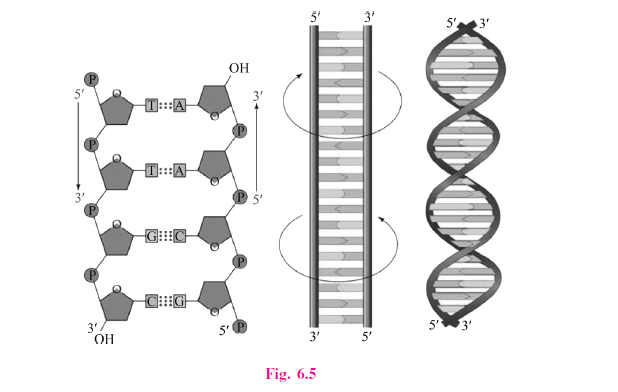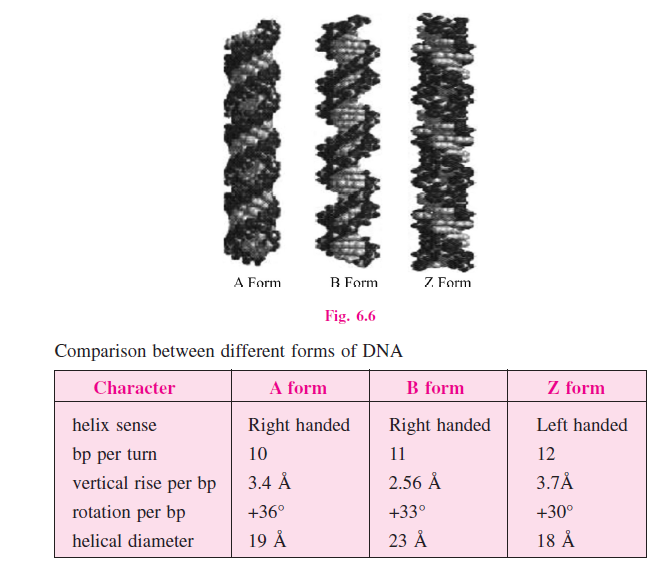Structure of different types of DNA
The primary structure of a nucleicacid is based on nucleotide sequence. Any regular, stable structure taken up by some or all of the nucleotides in a nucleic acid can be referred to as secondary structure. The complex folding of large chromosomes within eukaryotic chromatin and bacterial nucleoids is generally considered tertiary structure. The structure of DNA was worked out by bringing together a number of observations from various sources such as
(a) That DNA from different sources have remarkable similarity in their Xray diffraction patterns; suggesting that DNA molecules have uniform molecular
pattern and consists polynucleotide chains arranged in helical structure.
(b) The ratio of the bases (A: T and C: G) is very close to one. In base pairing event A and T can be paired with a maximum of two hydrogen bonds between them while C and G will have a maximum of three bonds.
(c) The long polynucleotide chains were held together through bonds between these residues. Using these observations, Watson and Crick constructed a model of DNA structures in 1953.

The Watson-Crick Model consists of sugar molecule joined together by phosphate diesters. Bases were observed to be projecting perpendicularly from the chains into the central axis. For each adenine projecting inwards, there is a corresponding thymine from the other chain and for each cytosine, there is a guanine. A-T and C-G are held together by two and 3 hydrogen bonds respectively. The two chains are however not identical because of base pairings. The chains donot run in the same direction with respect to linkage between the nucleotides, rather they are anti-parallel. Structurally DNA exists as three different forms namely: A, B and Z form. The A form of DNA posses’ right handed helix with a diameter of 26Å. The A form of DNA contains 11 base pair per helix turn and base turns rise of helix is 2.6Å. The B form of the DNA is considered as Watson-Crick DNA structure. In B form, the DNA helix is arranged as left handed. The B form of DNA contains 0.34 nm between bp, 3.4 nm per turn, about 10 bp per turn1.9 nm (about 2.0 nm or 20 Angstroms) in diameter. The Z form of DNA is a more radical departure from B-DNA with left handed helical rotation. Ion Z form of DNA each helical turn consist of 12 base pairs. Structures appear to be more slender and elongated.

Intext Questions
1. The primary structure of a nucleic acid is based on …………….. nucleotide
sequence
2. In base pairing event A and T can be paired with a maximum of two
hydrogen bonds
(a) 1 (b) 2 (c) 3 (d) 4
3. Watson and Crick constructed a model of DNA structures in the year
…………….. 1953
4. Structurally DNA exists as three different forms namely ……………..
